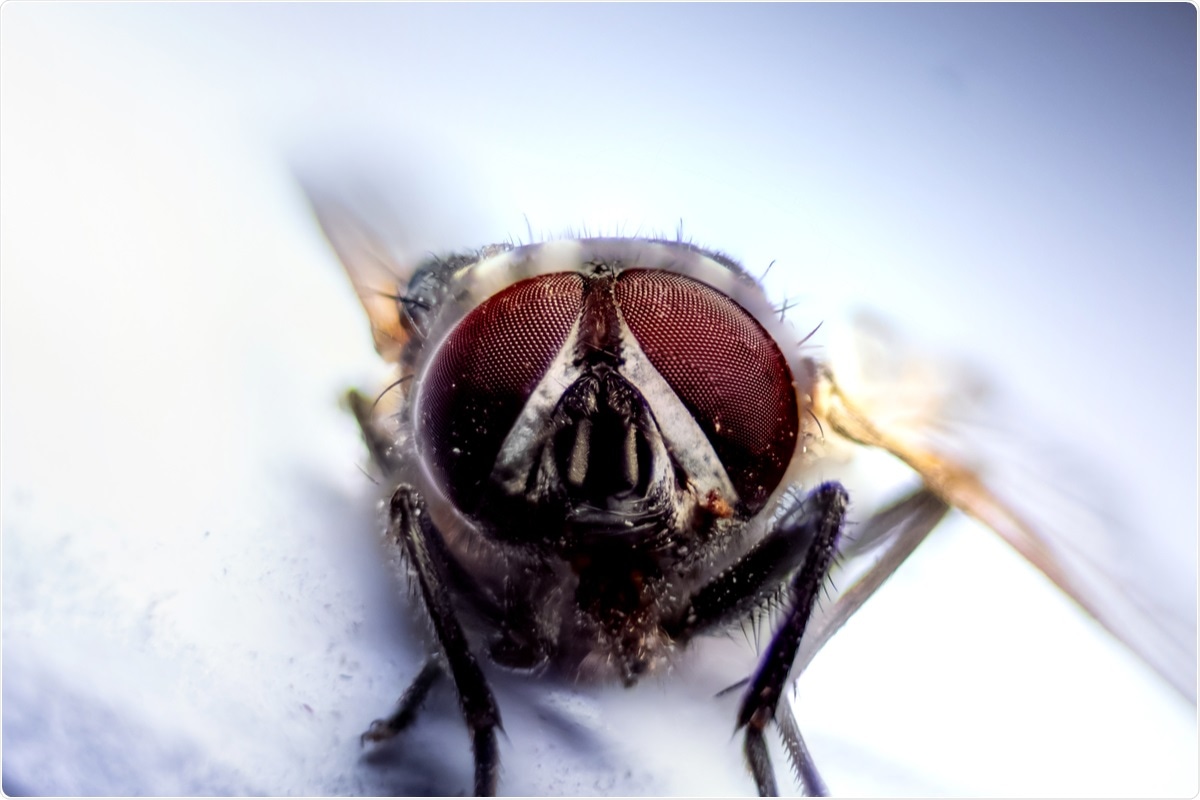The severe acute respiratory syndrome coronavirus 2 (SARS-CoV-2), the virus that causes the coronavirus disease (COVID-19), primarily spreads through respiratory droplets expelled when an infected person sneezes coughs or speaks.
In some instances, the droplets turn to aerosols and travel long distances or land on surfaces, leading to contact transmission.
A team of researchers in the USA – at Kansas State University and Agricultural Research Service – found that house flies can acquire and harbor infectious SARS-CoV-2 for up to 24 hours after exposure.

Further, house flies can mechanically transmit SARS-CoV-2 genomic RNA to the surrounding environment up to 24 hours post-exposure.
The study, published in the journal Parasites & Vectors, aimed to determine if house fly transmission occurs naturally and the potential public health implications of such events.
Study background
First detected in Wuhan, China, in December 2019, SARS-CoV-2 is a novel coronavirus that has wreaked havoc across the globe. To date, over 143.87 million people have been infected, and about 3 million have died globally.
COVID-19 in humans is characterized by diverse disease outcomes, ranging from asymptomatic to mild or severe illness. The virus spreads primarily through respiratory droplets and aerosols. It can also spread through contact with contaminated fomites.
House flies transmit bacterial, viral, and parasitic diseases to both humans and animals as mechanical vectors. They can carry over 250 different pathogens.
The virus infects and replicates in the arthropod vector and is transmitted to hosts during feeding in biological transmission. During mechanical transmission, the virus is acquired internally or on external surfaces of the vector, like the wings, legs, and mouthparts.
Past evidence showed that they could mechanically transmit coronaviruses, like the turkey coronavirus. However, the role of house flies in SARS-CoV-2 transmission remains unknown.
The study aimed to investigate the potential of house flies as mechanical vectors for SARS-CoV-2 transmission.
The study
To determine if house flies can carry SARS-CoV-2, the researchers conducted two independent studies. In the first study, house flies were tested for infectivity after exposure to SARS-CoV-2 spiked medium or milk.
The second study dealt with environmental samples that were tested for infectivity after contact with flies exposed to SARS-CoV-2. In both studies, the team collected samples at various points after exposure. They assessed these samples via real-time polymerase chain reaction (RT-PCR) and virus isolation.
To determine whether flies can transmit SARS-CoV-2, the team swabbed the inside surface of the containers holding flies fed with various substrates to be tested for the presence of viral RNA and infectious virus.
The team found that the collected samples contained viral RNA. Infectious virus was also detected in one or two swabs collected from containers with flies fed with the SARS-CoV-2 infected medium after four hours and 24 hours after exposure. This means that house flies are capable of spreading infectious viruses within their immediate environment.
In a nutshell, the two studies illustrated that house flies are potential vectors of SARS-CoV-2. They can acquire, harbor, and transmit the infectious virus. However, the low level of contagious virus carried by flies may limit SARS-CoV-2 to be transmitted and cause illness.
Under laboratory conditions, house flies acquired and harbored infectious SARS-CoV-2 for up to 24 hours post-exposure. Besides, house flies were able to mechanically transmit SARS-CoV-2 genomic RNA to the surrounding environment up to 24 hours post-exposure,” the researchers concluded in the study.
Further studies are required to determine if house fly transmission happens naturally and poses a global health threat.
- COVID-19 Dashboard by the Center for Systems Science and Engineering (CSSE) at Johns Hopkins University (JHU) – https://gisanddata.maps.arcgis.com/apps/opsdashboard/index.html#/bda7594740fd40299423467b48e9ecf6
- Balaraman, V., Drolet, B. Mitzel, D. et al. (2021). Mechanical transmission of SARS-CoV-2 by house flies. Parasites and Vectors. https://doi.org/10.1186/s13071-021-04703-8, https://parasitesandvectors.biomedcentral.com/articles/10.1186/s13071-021-04703-8
Posted in: Medical Science News | Medical Research News | Miscellaneous News | Disease/Infection News | Healthcare News
Tags: Coronavirus, Coronavirus Disease COVID-19, Genomic, Laboratory, Polymerase, Polymerase Chain Reaction, Public Health, Research, Respiratory, RNA, SARS, SARS-CoV-2, Severe Acute Respiratory, Severe Acute Respiratory Syndrome, Syndrome, Virus

Written by
Angela Betsaida B. Laguipo
Angela is a nurse by profession and a writer by heart. She graduated with honors (Cum Laude) for her Bachelor of Nursing degree at the University of Baguio, Philippines. She is currently completing her Master's Degree where she specialized in Maternal and Child Nursing and worked as a clinical instructor and educator in the School of Nursing at the University of Baguio.
Source: Read Full Article